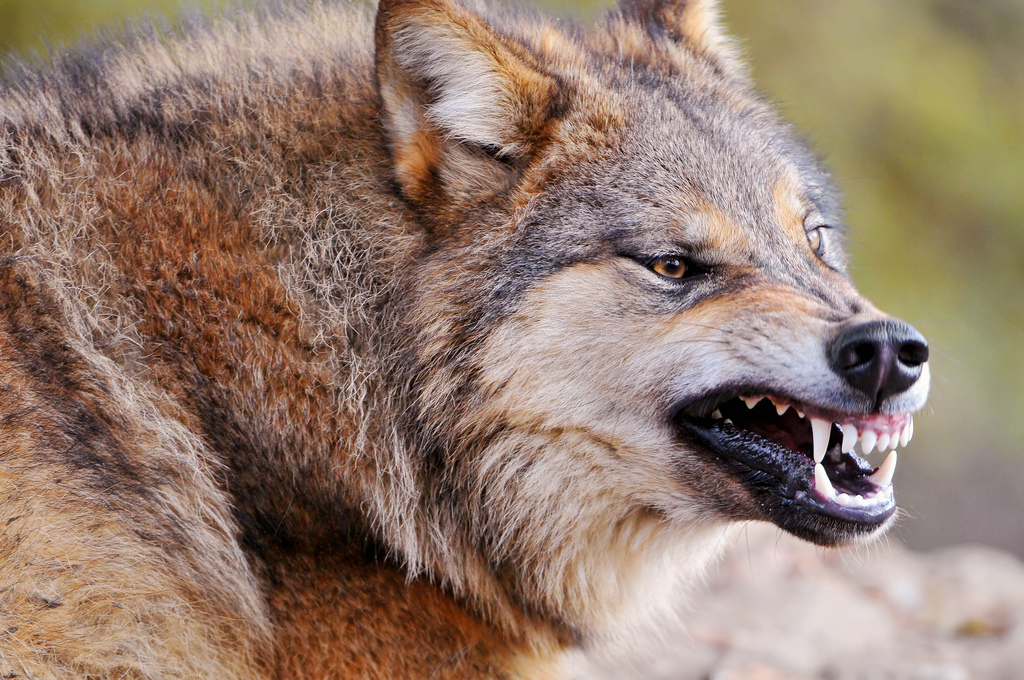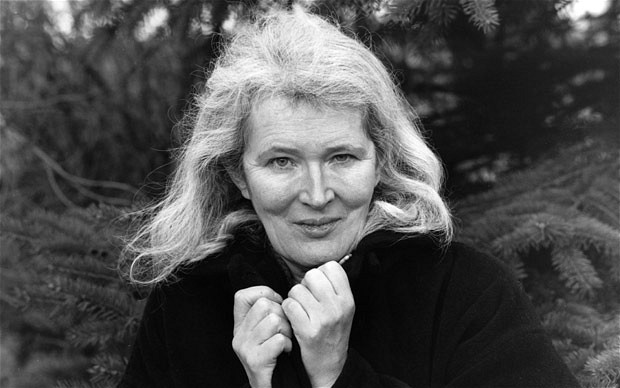 As we saw last month with H.G. Wells’ The Island of Doctor Moreau, our baser natures and bestial instincts can never truly be entirely suppressed. Wells implies that we all have the capacity to revert back to more primitive states in certain situations, that we all still unavoidably bear the “mark of the beast” though we cover it up and forget it is there.
As we saw last month with H.G. Wells’ The Island of Doctor Moreau, our baser natures and bestial instincts can never truly be entirely suppressed. Wells implies that we all have the capacity to revert back to more primitive states in certain situations, that we all still unavoidably bear the “mark of the beast” though we cover it up and forget it is there.
The bond with the beast is a common trope within the genre. Witches habitually have animal familiars, and creatures that are part-beast – like harpies, gorgons and sirens – make the best monsters. Vampires can transform into wolves and bats, and men under the influence of the full moon transform into werewolves once bitten. Transformation is a key component of fairytales too (the first horror stories) but they largely occur in a positive way, to right a previous wrong, such as a witch’s curse or spell. If you kiss a frog or love a beast you will probably get a handsome prince in return. To ensure a happy ending characters are rarely trapped forever in their beast form.
Angela Carter’s collection The Bloody Chamber is only too aware of dominant fairytale conventions and does everything it can to subvert them. Of the ten stories in her collection, six are overtly concerned with animals and three of them focus in particular on wolves. Wolves have become probably the most important animal in horror fiction, haunting gothic landscapes and fairytale forests alike. Werewolves, a hybrid form of man and wolf (‘wer’ deriving from Old English meaning ‘man’) are equally popular in modern fiction though they can be traced back to folklore. The first of Carter’s wolf stories ‘The Werewolf’ focusses on this creature, depicting a remote community in the mountains where the inhabitants live “harsh, brief, poor lives.” Purposefully non-specific in terms of location, we learn only that it is a “northern country” where the people believe in vampires and the Devil and ward them off with various superstitious practices. Armed with her father’s hunting knife, a young girl ventures through the forest to visit her grandmother. Inevitably a wolf attacks her but she fights back and cuts off its paw. Placing it in a basket she continues on her way to her grandmother’s who is laid up in bed with a fever. The child notices a “bloody stump where her right hand should have been” and realises that the wolf’s paw she has carried with her has transformed unmistakeably into the hand of grandmother, warts and all. In this short story Carter offers us a departure from the stock werewolf yarn by making the werewolf female, as well as transforming the victim in the fairytale classic into the predator. The young girl, brought up on a diet of superstition and fear, does the only thing she can do when confronted with a monster; she chases her grandmother out of the community and takes her cottage for her own.
‘Little Red Riding Hood’ is often considered to be an allegory about womanhood. Red leaves home and traverses the dangers of the forest, straying from the path due to the entreaties of a young man. Her red cloak, a symbol of menstruation, represents her sexual maturity and the wolf embodies sexual threat. In the original version the wolf consumes both the grandmother and Red. Later, the Brothers Grimm introduced a huntsman who cuts open the wolf to release the grandmother inside (and in some versions, Red). This can be interpreted as a rebirth, with Red emerging as an adult woman from the belly of the beast. However in Carter’s version there is no male rescuer, in fact there is no mention of men at all, except in regard to the ownership of the knife. The knife itself, a phallic weapon, is the instrument to restore control. By killing her grandmother and literally taking her place, the young girl emerges as an adult woman not through a process of rebirth but via violence and bloodshed, by assuming masculine power.
Carter’s second offering ‘The Company of Wolves’ also responds to ‘Little Red Riding Hood.’ After a series of anecdotes – one of which states that to burn a werewolf’s human clothes condemns them to beast form forever – we meet a young girl on her way to her grandmother’s. She dawdles in the woods to lose a wager to a handsome stranger she has met. If he reaches her grandmother’s cottage before her, she promises to give him a kiss, her delay signifying her own appetite. When she arrives her grandmother has been eaten and the wolf, still in human form, traps her in the cottage. In her supposed role as victim the young girl strips before the wolf, throwing her clothes into the fire until she is naked, but when he threatens to eat her, she laughs in his face. Knowing she is “nobody’s meat” she helps unclothe the wolf (throwing his clothes into the fire also) and they lie down together in her grandmother’s bed. Through her cunning the girl renders the beast harmless, though a beast forever. With references to a “savage marriage ceremony” she has tied herself to the wolf, not in a role of a victim, like her grandmother (indicative of an older, more fearful generation) but as an equal. Whether she becomes a wolf as well is unclear but her youth and fearlessness has tamed the beast. 
The third of Carter’s wolf stories ‘Wolf-Alice’ also concerns coming of age. Raised by wolves, Wolf-Alice is more animal than human as the order of her hyphenised name suggests. After her wolf mother is killed she is delivered to a nunnery where attempts are made to clothe her and teach her language. Failing miserably she is placed in the care of a duke who is as strange as his charge. We learn he casts no reflection and under the influence of a full moon transforms into a wolf. Both characters are liminal beings, not entirely human or wolf, and though connected by their lupine natures, they chose to live solitary lives. Things start to change when Wolf-Alice begins her menses. Looking for some rags to stem the flow of what she assumes is a wound, she discovers a mirror and her first playmate since she left the wolf pack. Having no concept of herself she believes her reflection is a stranger. But realising that she bleeds each month teaches her the concept of time and gradually she also learns that her mirror image is only a variation of a shadow, part of her own identity. Her transformation is complete when she discovers a wedding dress belonging to one of the Duke’s victims. Putting on the “visible sign of her difference” from her wolf kin, this process of self-reflection marks her acceptance of her human nature.
The Duke in contrast is more of an outcast because he is unnatural. The girl was always a girl though she was suckled by wolves but the Duke is a distortion and would not be welcomed into any pack, wolf or human. Unable to cast a reflection he knows even less about himself (and less about the dangers he faces) than the feral child. As with her other stories, Carter attributes the role of rescuer to her female characters. In this case, the Duke is saved by Wolf-Alice. It is her wolf instincts that alert her to danger and that allow her to tend to the Duke (by licking the wound he receives from a silver bullet). By recognising the duality of her nature she is able to restore the Duke, whose reflection begins to appear in the mirror opposite. Either he is returning to human form before he dies (if you give credence to silver bullets) or he is gaining a sense of self through his relationship with another person. They are no longer outcasts now they have one another.
Carter’s wolf stories are built on fairytale foundations but differ drastically from the original stories. Like the use of parallels and duality in ‘Wolf-Alice’, Carter’s stories are distorted reflections of a fairytale world we recognise, materialising into something much more gothic. In this world there are no huntsmen to save you. Autonomy and self-acceptance are the weapons of choice for young women venturing into the dark forests of womanhood. Embracing the beastly part of yourself is in no way a bad thing. In fact, unless you want to end up as someone’s meat, it helps to have sharp teeth.
V.H. LESLIE
WOLF PHOTO BY TAMBAKO THE JAGUAR
If you enjoyed V.H. Leslie’s column, please consider clicking through to our Amazon Affiliate links and buying some of her fiction. If you do you’ll help keep the This Is Horror ship afloat with some very welcome remuneration.









